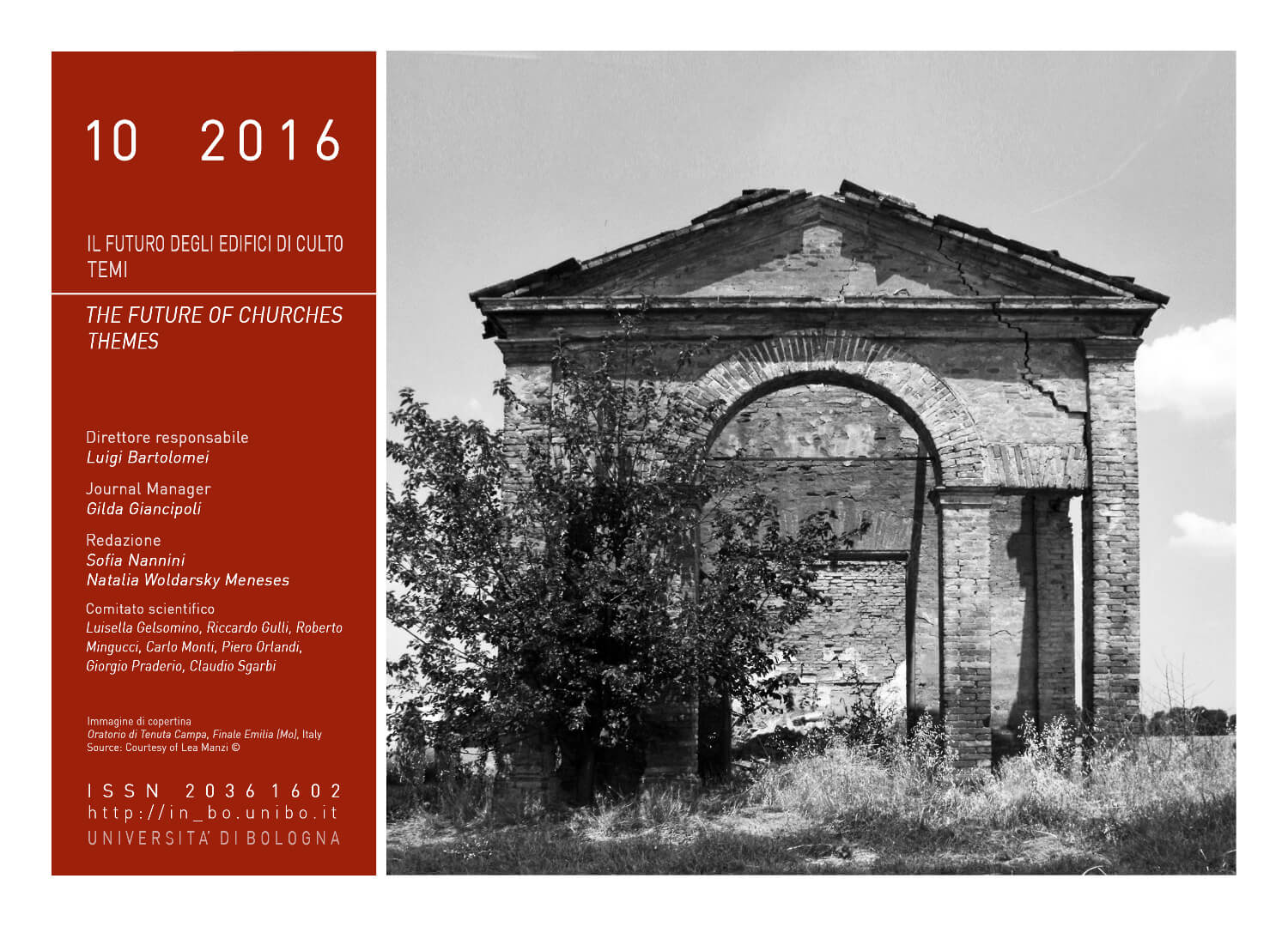Transforming the use, transforming the sense
DOI:
https://doi.org/10.6092/issn.2036-1602/6471Keywords:
Architectural transformation, Use, Re-use, Spatial symbolism, Spatial meaningAbstract
Transforming a sacred building is not a simple task. The complexity of the interventions of re-functionalization that aim to change of use of places of worship is generated by two orders of questions which are closely related. On the one hand, we are in the presence of buildings, almost always monumental, that possess a structure and architectural features that characterize them as singular buildings; on the other hand, they are designed so that their own architectural singularity was a symbolic expression: the towering heights, the distinctive use of light etc., respond to a logic that goes beyond the merely functional meaning of space. It is therefore possible to think a change of use for the places of worship? Which design instruments must be used in order to not overturn completely the space that the time and culture of a society have handed down?References
Gianluca Burgio, Xavier Monteys, Il Cinodromo Meridiana a Barcellona. 1961 – 2010, in:"Territorio", n.62, 2012.
Carlos Martí Arís, Le variazioni dell’identità, Città Studi, Torino, 1996.
Idem, La cimbra y el arco, Fundación Caja de Arquitectos, Madrid, 2004
Rafael Moneo, On typology, in : "Oppositions", n. 13, 1978.
Xavier Monteys, et al., El Canòdrom Meridiana convertido en Centro de Arte. In: Canòdrom 00.00.00., ACTAR, Barcelona,2010
Richard Sennett, Riparazione dinamica, in: L’uomo artigiano, Feltrinelli, Milano, 2008
Downloads
Published
How to Cite
Issue
Section
License
Copyright (c) 2017 Gianluca Burgio
Copyrights and publishing rights of all the texts on this journal belong to the respective authors without restrictions.
This journal is licensed under a Creative Commons Attribution-NonCommercial 4.0 International License (full legal code).
See also our Open Access Policy.
Metadata
All the metadata of the published material is released in the public domain and may be used by anyone free of charge. This includes references.
Metadata — including references — may be re-used in any medium without prior permission for both not-for-profit and for-profit purposes. We kindly ask users to provide a link to the original metadata record.







